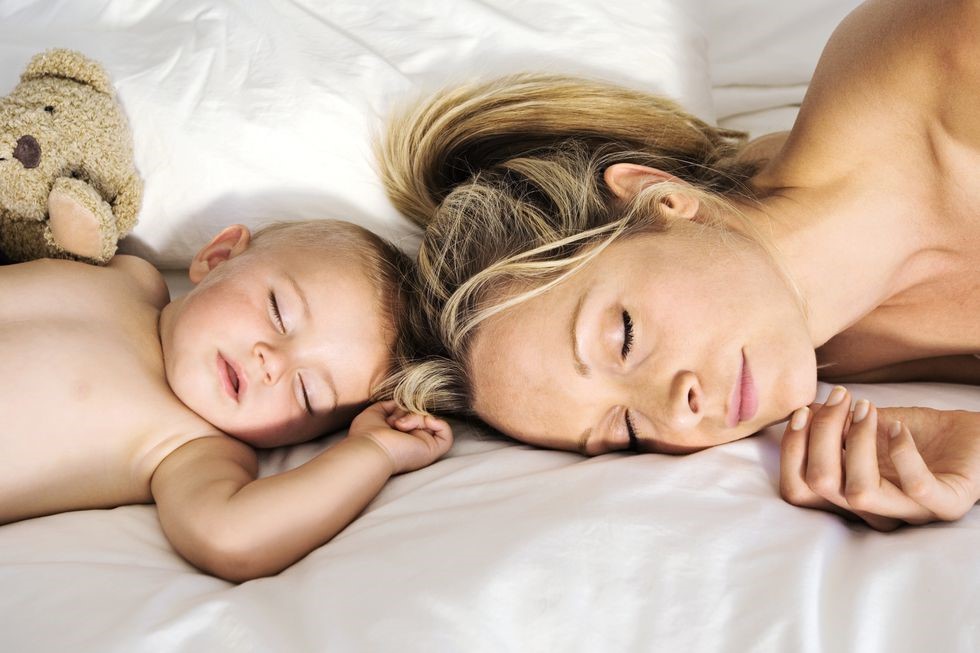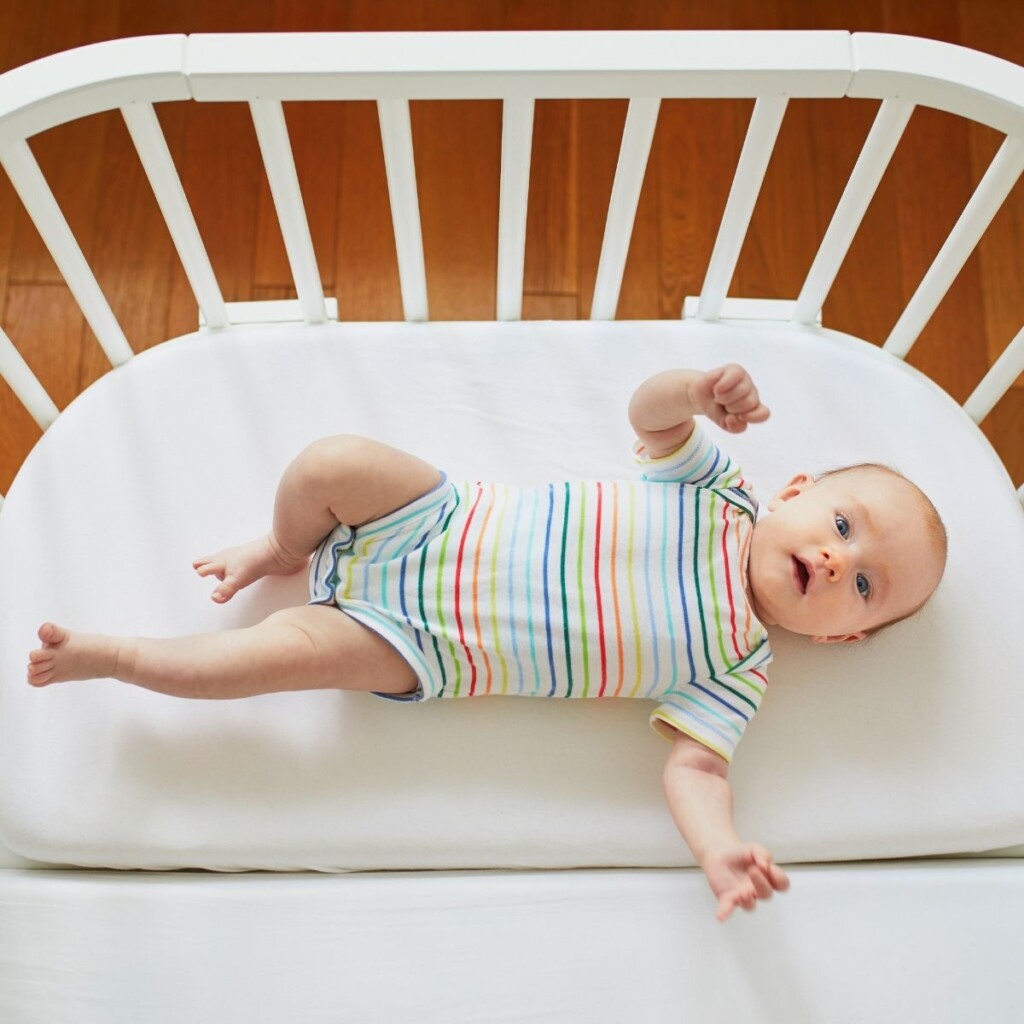
This guest blog from May Giffard-Burley reflects on her journey from police officer to mum. As a police officer who investigated SIDS deaths, May knew she would never bedshare with her baby. When her baby arrived bedsharing was the only option that allowed them any sleep. May set about to ensure she could bedshare safely, minimising any risk of SIDS. She shares her journey and her information here.
Investigating infant deaths as a pregnant police officer
One of the most enduring memories of my pregnancy with my eldest son was sitting in a hospital asking a mother about the circumstances surrounding the death of her newborn baby daughter. As a police officer within a specialist unit, it was my job to gather the facts necessary for the investigation that always happens when a baby dies suddenly and unexpectedly.
I don’t talk much about my pre-motherhood career. Aside from the way ‘mummy’ eclipses your pre-parenthood life, let’s face it, it’s the ultimate conversation killer. Nobody wants to talk about babies dying, but here’s the thing, we do need to talk about SIDS. Sudden Infant Death Syndrome, or ‘cot death’ is the sudden, unexpected and unexplained death of a baby. As you’d expect with deaths that are unexplained, nobody understands exactly why SIDS happens; it’s believed to be caused by a combination of factors. However, there are a number of things you can do to reduce the likelihood of it affecting your baby. Devastatingly, sometimes parents do absolutely everything right and still experience the tragic loss of a much loved little one.
SIDS prevention guidelines meant I knew bedsharing wasn’t ‘safe’
As I sat with that mother I hoped that my baby bump wasn’t distinguishable. I couldn’t bear the thought of causing her any more pain than she was already enduring. I also remember being terrified. According to the NHS website, in the UK, more than 200 babies die suddenly and unexpectedly every year. As a fraction of those born, it’s extremely rare. For me, as a result of my work, it was uncomfortably real. My first pregnancy ended in miscarriage and my anxiety about losing this baby was a constant weight. When he arrived, much to our joy and relief, the SIDS prevention guidelines were etched onto my mind.

We did everything the SIDS prevention guidelines suggested to keep him safe. We’d done our research and bought a beautiful ‘pod’ that attached to our bed with a screen between us to keep him safe from duvets, stray arms and other safety hazards. We knew he’d be in our room with us for the first year anyway; I couldn’t imagine him being any further away when he was so little, so that box was also ticked. His pod was free of cot bumpers, soft toys and comforters. We used those special baby sleeping bags so there was no risk from blankets. We’d created a little nighttime safe haven for him.
We got no sleep
There was just one little problem. Our beautiful new red-headed bundle of joy wouldn’t even entertain the idea of sleeping in his perfect pod, or anywhere else for that matter that wasn’t me. It didn’t matter how deeply asleep he seemed to be in my arms, the second he came into contact with that safe, clean, carefully thought out pod he woke screaming.
If you’re not already familiar with ‘The 4th Trimester’ I really recommend having a quick read about it. Essentially my newborn baby knew nothing of the new world he’d been rather rudely dragged into. He only had me as a familiar frame of reference. He wanted, needed and jolly well expected to be in contact with me at all times. No snazzy sleep pods or well-researched safety advice were going to change his mind.

Babywearing got us through the days. Carrying helped me transition from a panicked, exhausted new parent to one that occasionally got to go to the loo! More than that; the wraps that he spent his early life in were instrumental in forging a bond and understanding between us. Through carrying his body against mine I learned to recognise when he was hungry, or uncomfortable from the slightest wiggle. I could feed him before he cried for it. I knew when his nappy needed changing before leakages or smells. We were as in tune as was possible in the haze of those exhausting, overwhelming, wonderful days. But it all went pear-shaped at night.
Bedsharing was necessary, but how to make it safe
The SIDS prevention advice for safe sleep was clear: “do not sleep on a bed, sofa or armchair with your baby”. So we persevered with seemingly endless, completely sleepless nights that flew in the face of all my motherly instincts. Our little man couldn’t understand why I wanted to put him down at night. Unsurprisingly, attempts to reason with him and explain that I was in fact only a short distance away did nothing to change his mind. When I was so tired I forgot my own name, we realised that bedsharing needed to happen whether I liked it or not.

I needed to ensure our bedsharing was as safe as possible. If you’re not familiar with the terminology, Wikipedia states that “cosleeping is a a practice in which babies and young children sleep close to one or both parents, as opposed to in a separate room”. It’s often used to refer to bedsharing, which specifically relates to sleeping in the same bed as your little one.
SIDS: some risk factors
I knew from my work that some factors seemed more common than others in cases of SIDS. However, it was hard to find hard data showing the impact of variables like drug or alcohol use, smoking or falling sofa sharing, on the SIDS statistics. I couldn’t ask my health visitor for advice on safer bedsharing as all they’d ever said was “don’t do it”. So I did my own research.
Premature or small babies are more vulnerable to SIDS, so bedsharing may be less safe for this group. Luckily for me, at 10lb 8.5oz and over 42 weeks gestation we certainly didn’t fall into those categories! Neither my husband nor I smoke, take medication that might affect our sleep or use recreational drugs. So we were good on that front, and I breastfed, which also reduces the risk of SIDS.
Making bedsharing safe for us

Overtime we perfected the ‘art’ of safe bedsharing and found ways to make it work for us. For example, investing in thermal pyjamas for the grownups so we didn’t freeze without the duvet. Finding a nightlight that was just bright enough to see by, but not to convince our nocturnal little sleep-stealer it was daytime. Daddy was issued with a futon for those nights when either he required more than 10% of his mental capacity for the working day ahead, or for when snoring was an unwelcome serenade in the early hours!
Bedsharing wasn’t a perfect solution to our sleep issues, but it meant that we all actually slept a bit at night. That was a game changer in those early days. Crucially, by safely bedsharing, I felt I was meeting my baby’s needs in way that keeping us separated at night had prevented.
Make your own decisions
To be absolutely clear, I’m not advocating bedsharing for any individual. Nor am I suggesting anyone disregard the SIDS awareness recommendations. My message is this:
Parents need information about bedsharing safety and risks to make informed decisions about whether bedsharing is right for them. Parents empowered by information can best manage their risks and reduce likelihood of infant death.
I was heartened that my midwives provided advice on bedsharing safety following the birth of our second baby. However, I know that this isn’t consistently the case nationwide. If you find yourself without the information you need, there are some useful links to Unicef, and Lullaby Trust pages at the bottom of this article. In the meantime, I wish you all a safe and settled night’s sleep however it works for you … I think that’s my youngest waking now…
Resources and information
If you’ve been affected by SIDS, The Lullaby Trust provides advice and support for bereaved families.
BASIS, the baby sleep information source from Durham University: Sleeping in the parents’ bed
Safer sleep for babies: The Lullaby Trust (including making bedsharing safer)
Feeatured image: Co-sleeping, Bed-sharing, C Position Image courtsey of Rob Mank and the BASIS resource bank
About the author

May is mum to two wonderfully different little boys who run and grow faster than she thought possible. She writes the blog TheWrappingYears.com which follows their adventures in things like babywearing, the great outdoors, gentle parenting, ethical clothing & raising children who’ll make the world a better place… just as soon as they stop pouring the contents of the potty over each other!



Responses